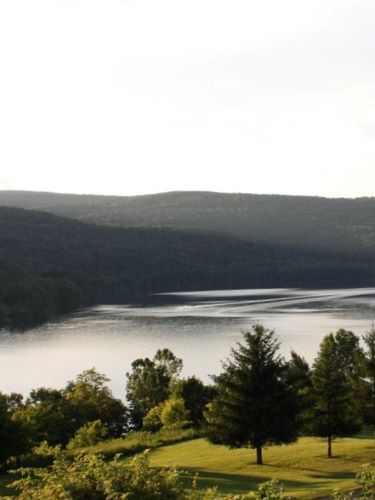Small lakes, reservoirs, and other impoundments are common throughout North America. These waterways offer a variety of fishing experiences for anglers of all ages.
Small lakes are often home to black bass, panfish, members of the pike family, catfish, perch, and other popular fish.
Types of Lakes
Small lakes can take several forms. Some lakes occur naturally. More often, they were engineered for specific reasons. Often, small lakes were once borrow pits or rock quarries that eventually flooded.
Reservoirs and mill ponds are formed by dams or dykes which result in the formation of an impoundment. These types of waterways include one or more sources and usually a tailwater for excess water to flow.
Preparation
Pre-trip planning is one of the most important steps when fishing small lakes. An assessment of public access and recreational facilities is usually required. Many community lakes contain launch sites, parking areas, parks, and other amenities.
A review of maps resources can be helpful before venturing onto a new lake. Using either traditional maps or online data, anglers can obtain information about lakes and other waterways. Maps provide information about access points, geographic features, tributaries, and other points of interest.
Before beginning a trip, anglers usually need to consult weather forecasts and other scientific resources. In areas where precipitation can impact fisheries, it may be necessary to consult records of recent rainfall or streamflow data near the impoundment.
Fish Structure
Small lakes often contain a variety of fishing structure. Most fish attracting habitats are related to depth and other bathymetric features.
Fallen or submerged timber is one of the most important types of fish structure found in small lakes. Stumps and other remains may be visible or submerged. Timber attracts black bass, crappie, pike, pickerel, and other sport fish.
Areas of spatterdock or other aquatic vegetation are also common in small lakes. Locating beds of vegetation can greatly improve angling success.
Manmade structures usually double as fish attractors. Docks, bulkheads, rip rap, sunken objects, and other structures can be valuable assets to anglers.
Fishing Techniques
When exploring a lake for the first time, it’s usually a good plan to cover as much water as possible. If possible, an early start will allow anglers to experience a variety of situations ranging from low light conditions to mid-day or beyond.
The type of tackle chosen may be species-specific or include lures designed to target a range of species. When scouting a lake, it can be helpful to carry multiple outfits with lures to cover a variety of situations. Lure choices may need to be chosen based on water conditions, local baitfish, weather, time of day, or other factors.
A common lake fishing plan might include a route that covers as many different habitats as possible. Timing can be important while scouting lake zones. For example, mornings can be a good time to fish areas that are likely to receive traffic later in the day.
Sunny shallow coves or grass beds may be more productive in the morning. As the sun moves higher in the sky, fish may move towards shaded or deeper areas of the lake.
Trolling can be a useful technique in some situations. Trolling allows boaters to cover large amounts of water while fishing multiple lines at various depths. Trolling in a pattern can present lures in a variety of conditions until fish are located.
Jigging is another technique that can be highly effective in small lakes. Jigging allows the angler to cover the entire water column.
Often overlooked, live and cut baits can be useful when lake fishing. Baits offer a natural presentation and can be fished in nearly all situations.
Observations
While on the water, anglers may discover an array of clues related to fish activity. Swirls or other disturbances can be an indication of fish activity.
Birds can offer valuable clues for anglers. Eagles and ospreys are often seen hunting along lakes. Both birds can be seen clutching their prey in their feet.
Diving birds can also be an indicator of healthy fish populations. Loons, grebes, and cormorants can provide clues about where fish may be located.
Other clues can be gleaned by observing fish that are caught. Hook wounds or scars can be a sign that the impoundment is subject to fishing pressure.
Related Information

